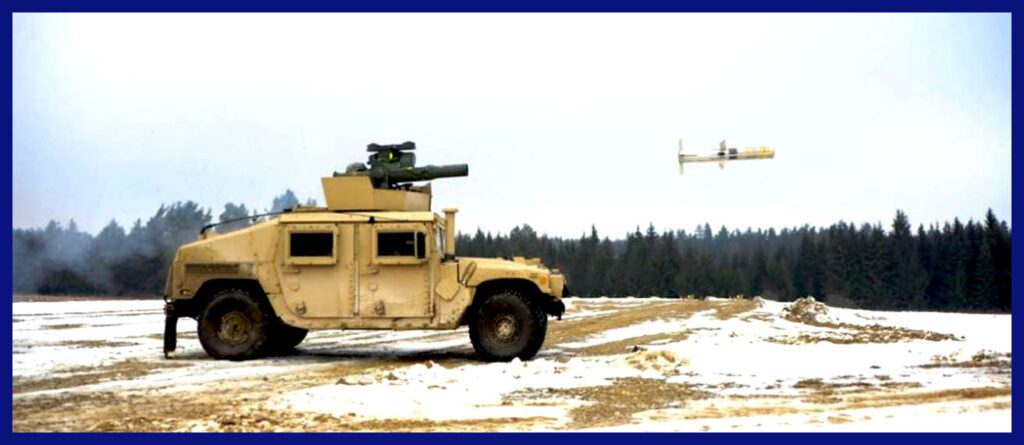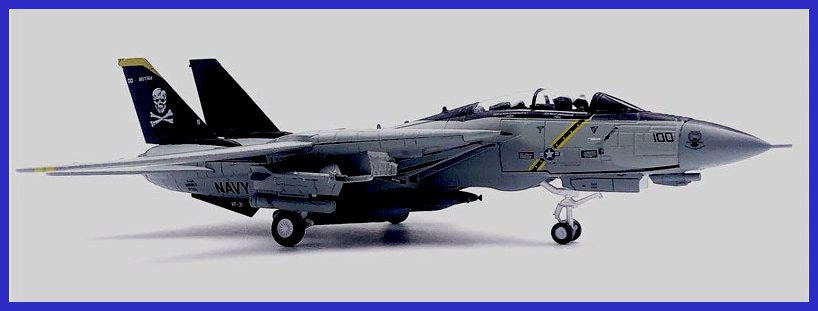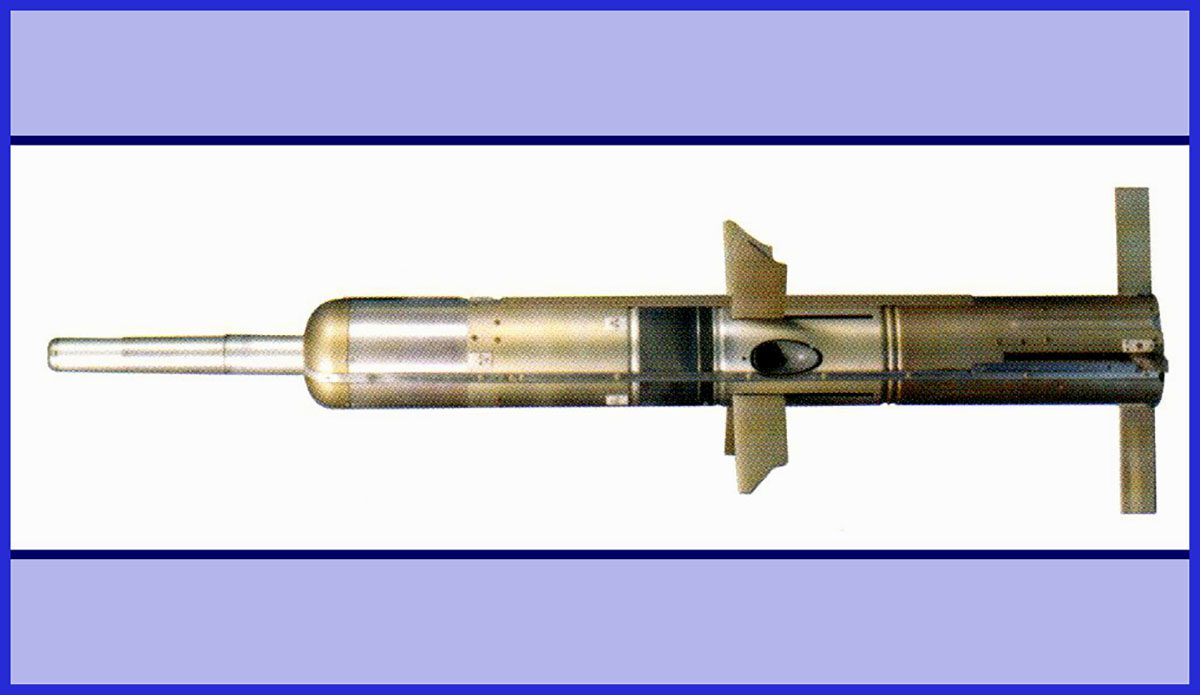The evolution of modern warfare demands versatile and advanced weaponry. In this context, the TOW 2A Weapon System stands out as the most effective heavy assault, long-range, anti-armour, anti-fortification, and anti-amphibious landing weapon system in service today. It is a crucial and complementary capability in layered ground force defence, offering dependable and accurate anti-armour attacks that have been successfully used in highly competitive circumstances.
TOW 2A is an American anti-tank missile with its NATO designation as BGM-71 TOW. It represents the latest generation of tube-launched, optically-tracked, wire-guided TOW weapon systems – a multi-mission capability that is used throughout the world today. Regardless of the surroundings or circumstances, the TOW missile empowers ground forces to outmatch enemy-wheeled and armoured vehicles.

The TOW, first used in 1970, is a weapon that can be fired by infantry (4 men), ground vehicles, and helicopters alike. It functions as a wire-guided weapon with a maximum range exceeding 3,000 meters. Following the launch, the gunner must sustain sight of the target to ensure impact. The TOW’s CLU (Command Launch Unit) allows for operations in all weather conditions and during both day and night situations. The system bears a striking resemblance to the Indian-origin NAG ATGM system.
The TOW missile was extensively utilized during the Vietnam War in the 1970s, the Iran-Iraq War in the 1980s and 1988, Operation Desert Storm in 1991, Operation Iraqi Freedom in 2003, and most recently by the Ukrainian army during the Russia-Ukraine War.
An Overview of the TOW 2A Weapon System
The TOW (Tube-Launched Optically-Tracked, Wire-Guided) Weapon System, featuring a precision strike multi-mission capable missile, stands as a preeminent long-range anti-armour/assault solution in contemporary global use. Its deployment spans over 40 international armed forces and is seamlessly integrated across more than 15,000 ground vehicles and helicopter platforms on a global scale. Notably, it has emerged as the favoured heavyweight assault anti-armour weapon system for various entities including NATO, Coalition forces, United Nations, and Peacekeeping Operations across the world.

The TOW 2A missile is presently developed by Raytheon Missile Systems for the U.S. Army to defeat advances in the armoured threat created by the advent of first and second-generation Explosive Reactive Armour ( ERA ). It incorporates a tandem warhead armament system to achieve increased lethality against tanks configured with explosive reactive armour. The precursor warhead in the missile probe is designed to set off and defeat the explosive in the tank’s ERA, clearing the way for the primary warhead to penetrate the base armour and defeat the tank.
The primary 150mm warhead employed on the TOW 2A missile has been proven in combat to defeat the most advanced armour threats on the battlefield today.
TOW Weapon System Superiority _ As proven on the battlefield, the superior stand-off range and minimal firing signature of the TOW Weapon System maximise gunner survivability. In today’s complex battlefield of sandstorms, smoke, dust, explosions, fog, obstructions, overhead cover, snowstorms and secondary fires – precision engagement creates significant challenges for many of the other state-of-the-art missile systems. The TOW weapon system is the exception. Its Command Line Of Sight advantage does not require seeker lock or laser return to engage the target. Without exception, what the Gunner can see, the TOW can destroy.

The Design History of the TOW Weapon System
Following the acquisition of Hughes Electronics’ missile systems division from General Motors Corporation in 1997, Raytheon Co. assumed responsibility for the development and manufacturing of the TOW system under its name. This versatile weapon finds utility in countering armour, bunkers, fortifications, and amphibious landings. Presently, over 40 military forces employ the TOW, and its integration extends to over 15,000 ground, vehicle, and helicopter systems worldwide.
In its fundamental infantry configuration, the system can be broken down into several distinct modules. These include a foldable tripod mount, a launch tube, and an essential daylight tracker unit, which can optionally be enhanced with AN/TAS-4 or AN/TAS-4/A gas-cooled night sight. Additionally, a traversing unit is mounted onto the tripod, carrying the launch tube, sight, trigger mechanism, and a bridging clamp designed to connect with the missile’s umbilical data connector. Apart from this central assembly, a distinct fire control system (FCS) module is present to handle all guidance calculations, alongside a battery pack supplying the necessary power to the system. These two modules are interconnected, with the FCS connected to the daylight tracker through a cable link.

In the years 2001 and 2002, a collaborative effort between Raytheon and the U.S. Army led to the development of an extended-range variant of the TOW-2B, initially designated TOW-2B (ER) and later known as TOW-2B Aero. This enhanced version features a distinctive nose cap that enables it to achieve a range of 4.5 km. The TOW-2B model possesses a top attack capability and entered production in 2004. Furthermore, wireless iterations of the TOW-2A, TOW-2B, and TOW-2B Aero were created, incorporating a “stealthy” one-way radio link, identifiable by the “RF” suffix. Notably, these missile variants necessitate no special modifications to the launcher, as the RF transmitter is securely enclosed alongside the missile and utilizes the standard umbilical data connector.
The TOW missile in its current configuration is not a “fire and forget” weapon and, like the majority of second-generation wire-guided missiles, employs semi-automatic Command Line of Sight guidance. This indicates that the guidance system is physically connected to the platform and that the target must remain in the shooter’s line of sight throughout the entire missile flight.
The U.S. military awarded Raytheon a contract in October 2012 to make 6,676 TOW (wireless-guided) missiles. The BGM-71E TOW 2A, BGM-71F TOW 2B, TOW 2B Aero, and BGM-71H TOW Bunker Buster are some of the missiles that will be manufactured. However, the air-launched TOW missile was discontinued by the US Marine Corps in 2013.

TOW 2A: Technical Specifications
- Weight: 21.6 kg ( 47.6 lb )
- Length: 3.8 ft ( 46 in )
- Diameter: 5.8 in ( 14.7 cm )
- Warhead: 4-6 kg penetration
- Detonation: Impact
- Propulsion: 2-stage solid propellant
- Effective Range: 3.75 km ( 2.33 mi )
- Sights: Optical sight & Thermal Imaging
- Speed: 320 m/s
- Guidance: Optically tracked, Wire-guided or wireless radio-guided in RF variants
- Launch Platform: Man-portable launcher, Humvee or any other military vehicle
- Shelf life: 10 years
- Time of Flight: 21sec
Furthermore, seize this exclusive opportunity to acquire the exquisite large-scale 1/100 premium die-cast models of the formidable Grumman F-14A Tomcat. These remarkable and iconic military jets boast an impeccable track record and are now available for purchase on AirModels with worldwide delivery. Click here now to secure your piece before the limited stock is depleted.

In conclusion, within the realm of modern military innovation, the TOW 2A Weapon System emerges as a remarkable achievement, seamlessly melding cutting-edge engineering with tactical prowess. Its lineage from the venerable TOW system is evident in the refined design and enhanced capabilities it offers. With its optically tracked guidance, wire-guided precision, and potent warhead, the TOW 2A epitomizes accuracy and potency in neutralizing armoured threats while minimizing collateral damage. Furthermore, its adaptability across diverse launch platforms solidifies its relevance in a dynamic battlefield landscape.
The TOW 2A is not merely a technological marvel; it serves as a testament to collaborative expertise. Engineers, designers, and strategists converge to craft a weapon system that embodies efficiency, reliability, and strategic impact. Representing a versatile solution for modern armoured warfare challenges, the TOW 2A exemplifies the synergy between defence innovation and operational needs. With each launch, it reinforces the commitment to safeguarding security while highlighting the ever-evolving nature of military preparedness. In an era where threats evolve with rapidity, the TOW 2A Weapon System stands as a sentinel of defence—a tribute to human ingenuity devoted to maintaining peace through strength.
Important Announcement for Our Valued Readers!
After an article is published, it is possible that updates or changes may have occurred beyond the time of publication. Therefore, it is important to be aware that certain information in the article might be outdated. To ensure the most accurate analysis, it is highly recommended to verify the content with the latest sources available.
However, we are dedicated to delivering outstanding articles on military products and global updates. Maintaining quality and smooth operation requires resources. Your support sustains our efforts in providing insightful content. By purchasing high-quality products through our affiliated links, you help us keep our platform alive and acquire top-notch items. Your unwavering support is invaluable and inspires us to strive further.
We welcome your suggestions and requests for more information, as we value feedback from our readers. If there’s specific defence material or equipment not covered on our site, please share your request in the comments. We’ll strive to research and provide the required information. We sincerely thank you for your unwavering interest in our website, and we eagerly anticipate hearing from you! Enjoy your reading experience!
